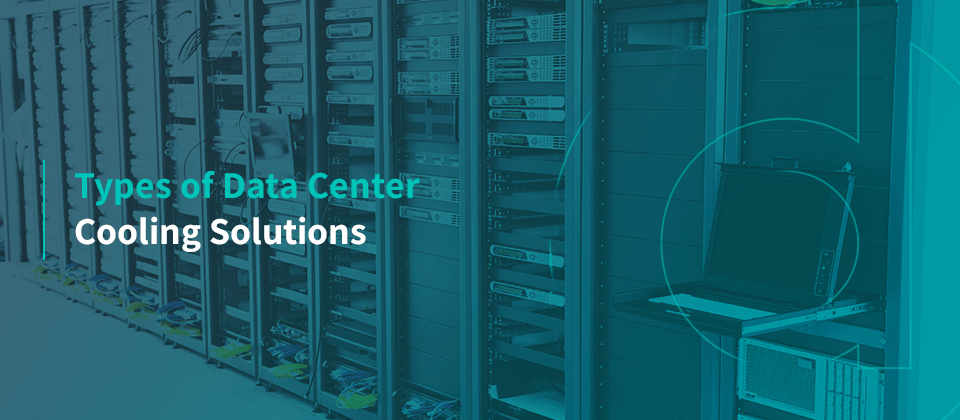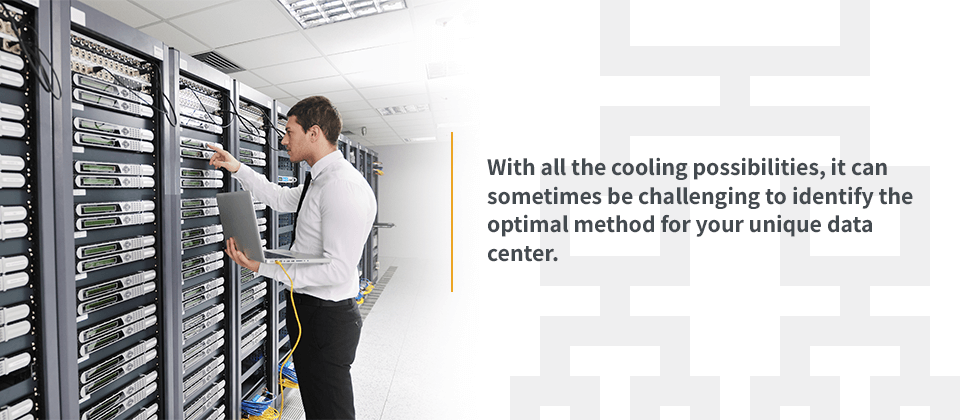
Types of Data Center Cooling Solutions
Because most data centers use significant amounts of energy during operation, they generate large amounts of heat, especially when running around the clock. Overheating can damage server equipment, often leading to unwanted downtime when the hardware requires replacing. More importantly, overheated computer equipment can create short circuits and potential fire hazards, so choosing the most beneficial cooling solutions for your data center is critical for the safety and protection of your employees and company assets.
How to Cool a Data Center
Excessive temperatures and high humidity create undesirable operating conditions for information technology (IT) equipment and network hardware. Data center cooling eliminates excess heat from your working environment and replaces it with cooler air. Some systems often require continuous temperature monitoring, especially during expansion when additional equipment can cause higher chances of overheating.
It’s critical to measure the intake temperature across your entire data center, including any potential hot spots. At a minimum, you want to evaluate the temperature at mid-height, at the edges of each rack and at the centers of each row.
The first step to managing a safe and efficient work environment is implementing a data center solution specific to your equipment and operating conditions.
Data Center Cooling Methods
With all the cooling possibilities, it can sometimes be challenging to identify the optimal method for your unique data center. Some of the most common cooling methods include:

- Computer room air conditioners and handlers (CRAC and CRAH): Computer room air conditioners (CRAC) operate similarly to residential air conditioners by distributing cool air across a server room. They are among the most affordable cooling equipment available, although they lack the high energy efficiency of other options. Computer room air handlers (CRAH) involve an entire system that uses fans to circulate air brought in from outside the building.
- In-row cooling units: In-row cooling units fit in between the server cabinets and use horizontal airflow, drawing warm air from the hot aisle, cooling it and distributing the air into the cool row. These units allow you to monitor the data center’s temperatures and control the airflow levels.
- Calibrated vectored cooling: Calibrated vectored cooling (CVC) systems optimize airflow and manage heat by sending cool air to the hottest parts of the data center. The goal is to maximize energy by using fewer fans and less power than a method that cools a whole area.
- Direct-to-chip cooling: Direct-to-chip cooling systems are among the most effective methods for cooling an entire server room because they cool the processors directly. This technique uses flexible tubes containing fluid that absorbs the heat and carries it away from the equipment.
- Evaporative cooling: Because evaporative cooling relies on the natural evaporation of water to cool an area, it is one of the most economical and environmentally friendly cooling processes. This method draws warm air across a wet filter or pad to absorb the heat, then redistributes the remaining cool air. Some evaporative cooling methods use water distributed from a misting system, which works well for data centers with humidity controls.
Contact the Experts at DataSpan Today
If you need additional help determining the ideal cooling solution for your unique data center application, the professionals at DataSpan can assist you. We offer a comprehensive range of practical solutions to keep your data center cool and operating efficiently. Connect with us online today to learn more.







